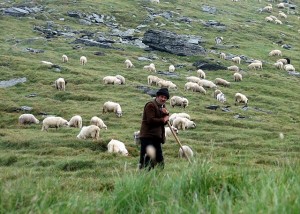
"Shepherd in Fagaras Mountains, Romania" Photo courtesy of Darwinek, Wikipedia.
Several years ago, when I first began to research my Müller ancestors, I just assumed that it would be a rather simple process to trace my German lineage. After all, I knew that one all-important fact, the name of my immigrant ancestor’s home town. Any researcher will tell you that you can’t research across the ocean unless you know that particular detail. Jacob Müller, my great-grandfather and my immigrant ancestor, was from Bierbach, Bavaria.
I assumed that generation after generation of my Müllers had lived and raised their families in that same town. My plan was to order microfilmed copies of the Bierbach church records from the local LDS Family History Center. My Müller ancestors’ baptism, marriage, and death records should all be in the Bierbach parish records. Right? Was I ever mistaken!
I ordered the film of the Evangelisch-Reformerte Kirche in Ernstweiler, which contains the parish records from Bierbach. But I did not find much in those records. To make a long story short, with the help of another German researcher I ordered film after film of church records of the area surrounding Bierbach. The Müllers should have been in some of those local records, but they weren’t.
I have come to refer to this strategy as my shotgun approach to research—I figured if I went through enough church records in the Bierbach area I should eventually hit something relevant. I came up with a name here and there, but nothing significant. Where were my Müllers? Where had they lived and raised their families?
It wasn’t until we discovered a clue on Johann Müller’s death record that we started to make some progress. Johann Müller was the father of my great-grandfather Jacob, the immigrant. Johann’s death record stated that he was born in Gerhardsbrunn. That was farther northeast than I had been looking. I would broaden my search.
It was a lengthy process as I ordered even more microfilmed parish records of other areas. But I did make progress as the name of one town led me to the name of another. I ended up chasing those migratory Müllers all over a little hilly section of Bavaria and eventually I was able to trace them back to the late 1600s.
But why did they move around so much? The records gave me the answer to that question: they were schaefers, the German word for shepherds.
Briefly, these are the places the Müllers lived, worked and raised their families:
My great-grandfather Jacob Müller was born in Bierbach.
Jacob’s father was Johann Müller (1816-1870). Johann was born in Gerhardsbrunn. He was a shepherd and farmer. Jacob married Marie Kessler. She was from Walsheim and they were married there. Walsheim is south of Bierbach.
Johann’s father was Valentin Müller (1763-1858). Valentin was born in Mittelbrunn. He was a shepherd in Niederauerbach (1780-90), in Saalstadt (1787), in Gutenbrunnen (1797), and in Bierbach (1822-1845>).
Valentin married Margaretha Arnberger in Battweiler in 1787 but the marriage was recorded in Winterbach. Margaretha was from Oberauerbach. Some of their children were born in Niederauerbach (but their baptisms were recorded in the Contwig), some were born in Bierbach (baptisms recorded in Ernstweiler), and some were born in Gerhardsbrunn.
Valentin’s father was Johann “Theobald” Müller (c1736-?). Theobald was born in Oberarnbach. He was a shepherd in Saalstadt. Theobald married Eva Krafft in Mittelbrunn in 1760. Eva was from Landstuhl.
Below is a map of the area. I have traced their movements as I know them in green. To give you an idea of the map’s scale, the driving distance between Bierbach (to the left) and Gerhardsbrunn (toward the upper right) is about 12.5 miles as the crow flies. This map is from the 1999/2000 ADAC Maxi Atlas, 1:150,000.
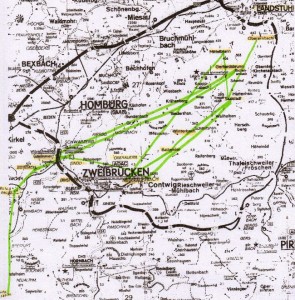
1999/2000 ADAC Maxi Atlas, 1:150,000, page 153.
I also did a little research about shepherding:
Shepherding is one of the world’s oldest occupations, over 6,000 years old. Sheep were kept for their milk, meat and especially their wool. Shepherding was often confined to rugged and mountainous areas while the farmers grew crops in the lowlands and river valleys
The sheep had to be able to move from pasture to pasture and shepherding became an occupation separate from that of the farmer. Shepherds were an important part of the economy and were often wage earners, paid to watch the sheep of others.
The shepherd had several duties. He kept the flock intact and protected it from wolves and other predators; he milked the sheep and made cheese from this milk; he supervised the migration of the flock and ensured they made it to market areas in time for shearing.
Shepherds lived apart from society and were largely nomadic. It was mainly a job of solitary males without children [Really!] and new shepherds needed to be recruited externally. Shepherds were most often the younger sons of farming peasants who did not inherit any land. In some societies each family would have a family member to shepherd its flock, often a child, youth or an elder who could not help much with the harder work.
Shepherds often lived in small cabins and bought their food from local communities. Occasionally shepherds lived in covered wagons that traveled with their flocks.
There you have it. The Müllers probably kept moving to supply their flocks with fresh grazing land. I doubt the Müllers owned any land in Bavaria since they were always on the move. Owning his own farm in America was probably very important to Jacob Müller/Miller.
It is interesting to note that Jacob Miller, having descended from generations of shepherds, never raised any sheep on his Blackcreek Township farm to my knowledge.
Identification numbers of Family History Library microfilms used are available upon request.

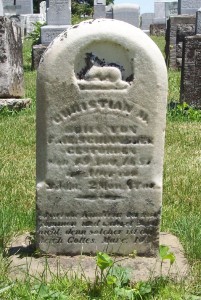


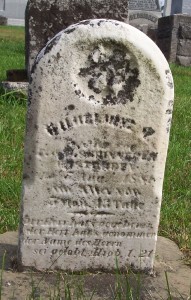
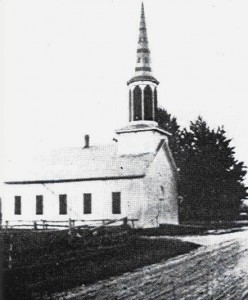
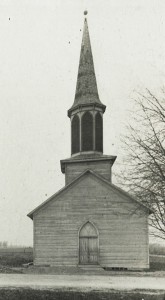
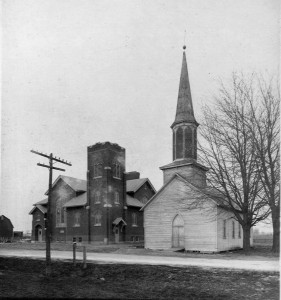
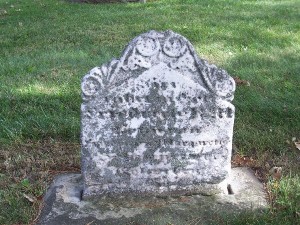
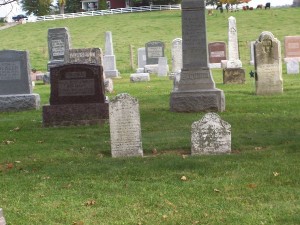


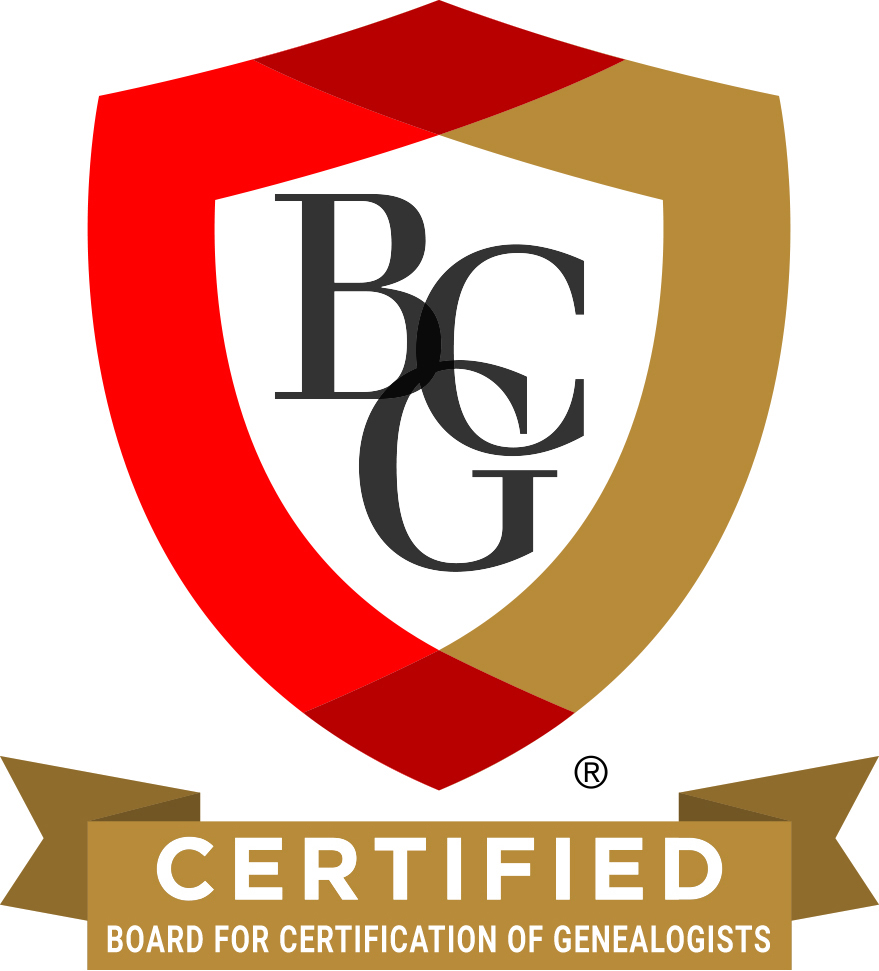
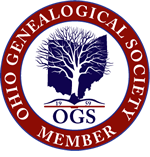

I don't have any information about that event, but what names are you looking for? There may be an account…
As far as I know Gertrude was his only child.
Did Johannes have any children besides Gertrude?
I got a photo of van wert men mustered to leave for ww1 aug 5 1917. Wondering if you have…
Unusual names for sure. I wish I knew why he picked those names. Liking geography is a good possibility. Thanks…